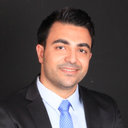Ambulatory blood pressure monitoring and diabetes complications: Targeting morning blood pressure surge and nocturnal dipping.
الكلمات الدالة
نبذة مختصرة
Ambulatory blood pressure monitoring (ABPM) correlates more closely to organ damages than clinic blood pressure (BP). In the current study we aimed to investigate the association between micro- and macrovascular complications of diabetes and both diurnal and nocturnal variability in BP.A total of 192 patients with type 2 diabetes (T2DM) who had complete data on ABPM were selected. BP categories were defined based on 2017 ACC/American Heart Association BP guideline. The cross-sectional association between different BP phenotypes and diabetes complications including cardiovascular disease (CVD), nephropathy, retinopathy, and neuropathy was assessed using multiple logistic regression models adjusted for age, sex, body mass index, hypertension (HTN), hemoglobin A1c, fasting blood glucose (FBG), triglyceride (TG), high-density lipoprotein cholesterol, low-density lipoprotein cholesterol, and total cholesterol.Approximately 48.9% of participants with T2DM had 24-hour HTN. The prevalence of daytime, nighttime, and clinic HTN were 35.9%, 96.3%, and 53.1%, respectively. Approximately 54.2% of participants had nondipping nocturnal pattern and 28.6% were risers. Nondipping nocturnal BP was associated with CVD, neuropathy, and retinopathy (P = .05, .05, and .014, respectively). Sleep trough morning blood pressure surge (MBPS) was associated with neuropathy (P = .023). Neuropathy was also associated with other components of MBPS (P < .05).We demonstrated that diabetic neuropathy was associated with all the components of MBPS and abnormal dipping status. Our results indicated loss of nocturnal BP dipping but not MBPS as a risk factor for CVD and retinopathy in patients with T2DM. Our findings once again highlighted the importance of ambulatory BP monitoring and targeted antihypertensive therapy directed toward to restore normal circadian BP in patients with T2DM.





